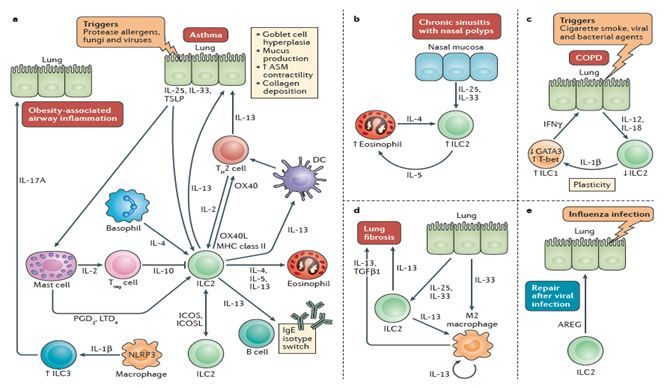
Logout
If you want to log out click in LogOut


Recent studies over the last 10 years have increased our understanding of functions and mechanisms which involve innate lymphoid cells (ILC)(1). These cells play crutial roles in many immune processes including protective immunity, tissue remodeling and regulation of homeostasis and inflammation.
Classified in 3 major groups (ILC1, ILC2, ILC3) based on expression of key transcription factors and production of cytokines thanks to a uniform nomenclature implemented in 2013(5), these ILC are typically associated with T helper 1 (TH1)-, T helper 2 (TH2)- and T helper 17 (TH17) type immune responses(4).
When dysregulated, the involvement of these TH cells in inflammatory process and many autoimmune and inflammatory diseases have been quickly highlighted.
Ebbo M. et al, Nat Rev. Immunol. 2017 / Figure 2 | Innate lymphoid cells are involved in various airway inflammatory disorders. a) In airway hyper-responsiveness and allergic asthma, b) In chronic rhinosinusitis with nasal polyps , c) In chronic obstructive pulmonary disease (COPD) d) In a murine bleomycin-induced lung fibrosis model, e) In a mouse model of H1N1 influenza virus infection.
Additionally, plasticity processes between innate lymphoid cells types have an important role in many of these diseases like chronic obstructive pulmonary disease (COPD) and chronic rhinosinusitis with nasal polyps(2,3). Studying all these mechanisms allows to understand these outcomes and will bring paths in order to develop new therapeutic drugs.
To discover our associated products and reagents :